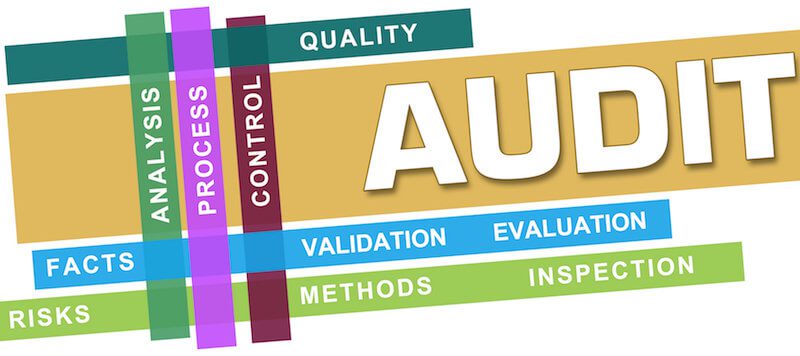Title IV Compliance and A133 Audit Findings
 NSLDS reporting and A133 audit Title IV compliance findings can be a challenge for Higher Education Institutions. Proper enrollment reporting is critical for institutions to be in compliance with federal financial aid regulations. To ensure accuracy in institutional accountability, all non-Federal entities that expend $500,000 or more of Federal awards are required to undergo an annual audit as specified by the Single Audit Act Amendments of 1996 and commonly referenced as the A133 audit. However, many institutions struggle with the reporting process placing their eligibility to participate in federal aid programs at risk.
NSLDS reporting and A133 audit Title IV compliance findings can be a challenge for Higher Education Institutions. Proper enrollment reporting is critical for institutions to be in compliance with federal financial aid regulations. To ensure accuracy in institutional accountability, all non-Federal entities that expend $500,000 or more of Federal awards are required to undergo an annual audit as specified by the Single Audit Act Amendments of 1996 and commonly referenced as the A133 audit. However, many institutions struggle with the reporting process placing their eligibility to participate in federal aid programs at risk.
It is not unusual for external auditors to generate “findings” when data and compliance reporting are inconsistent with policies adopted by the Department of Education. Such “findings” can contribute to financial penalties for institutions. Also, if issues continue to persist with institutions being in a non-conforming and non-compliant environment the possibility of loss of Federal Title IV funds for an institution exists. This is NOT an idle threat from the Department of Education responding to auditor “findings” from the A133 audits of higher education institutions. Colleges and universities have lost access to Title IV funds with highly negative consequences for their students and the institution.
Title IV Compliance Reporting

The U.S. Department of Education tracks Title IV loans and grants through the cycle of aid approval through closure. This is done through the National Student Loan Data System (NSLDS), the central database for student aid. As part of the aid awarding process, the NSLDS collects enrollment data from schools throughout the year.
The National Student Clearinghouse (NSC) was founded by the higher education community to help institutions relieve the costs of student data reporting. The NSC offers many services to institutions. One of those services is reporting data to the NSLDS on behalf of the institution. This is deemed a critical component of the organization’s offerings.
There are those institutions that choose to report their enrollment and degree awarded data directly to the Department of Education. This is accomplished through the National Student Loan Data System (NSLDS) as opposed to using the intermediary services of the National Student Clearinghouse (NSC). This is a perfectly acceptable means of enrollment and degree awarded compliance reporting.
National Student Clearinghouse Reporting Alignment of Information
 Title IV Compliance challenges can arise from many institutional practices. For example, in order to be competitive in student recruitment or to align academic programs with professional job markets, many institutions will maintain multiple academic calendars, or have overlapping semesters and/or sessions. This structure often leads the institution to be classified as an institution with nonstandard terms by the U.S. Department of Education, which impacts federal aid disbursement requirements. For institutions with standard terms defined, courses often offer study abroad and travel opportunities after the season ends to enrich the learning experience, then record the earned credit after term completion. Furthermore, institutions may have student data stored in multiple systems with academic programs offered at an increasing number of locations, with students taking courses on multiple campuses simultaneously.
Title IV Compliance challenges can arise from many institutional practices. For example, in order to be competitive in student recruitment or to align academic programs with professional job markets, many institutions will maintain multiple academic calendars, or have overlapping semesters and/or sessions. This structure often leads the institution to be classified as an institution with nonstandard terms by the U.S. Department of Education, which impacts federal aid disbursement requirements. For institutions with standard terms defined, courses often offer study abroad and travel opportunities after the season ends to enrich the learning experience, then record the earned credit after term completion. Furthermore, institutions may have student data stored in multiple systems with academic programs offered at an increasing number of locations, with students taking courses on multiple campuses simultaneously.
Additional challenges form when the institution and/or the student systems do not have a clear means to track critical items of student class participation or representing a true picture of students’ enrollment status. As students quit attending classes or leave the campus entirely, institutional practices may not capture the information. Institutional policies may complicate the matter further by having multiple academic load and level rules in calculating students’ enrollment status. The many advances in technology and the flexibility it offers contributes to the burden of accurately reporting students’ enrollment status.
Many student information system vendors offer NSC extract processes to assist with enrollment reporting. Since the extracts are designated based on a “vanilla” method of enrollment management, institutions find that the delivered solutions don’t match their campus business practices and offer no guidance or appropriate configuration options.
A133 Audit Findings – Preparation
 Fortunately, institutions can take steps to simplify their ability to stay compliant with federal regulations and receive clean annual A-133 audits from external auditors. These steps include modifying the structure of academic calendars into a format that falls within the standard-term classification as defined by the U.S. Department of Education while remaining flexible in class begin and end dates. In addition, aligning institutional enrollment policies with NSC / NSLDS guidelines provides clarity when interpreting the data for reporting extracts.
Fortunately, institutions can take steps to simplify their ability to stay compliant with federal regulations and receive clean annual A-133 audits from external auditors. These steps include modifying the structure of academic calendars into a format that falls within the standard-term classification as defined by the U.S. Department of Education while remaining flexible in class begin and end dates. In addition, aligning institutional enrollment policies with NSC / NSLDS guidelines provides clarity when interpreting the data for reporting extracts.
According to the NSC, properly reporting unofficial withdrawals is the most frequent problem that schools are currently encountering in their A-133 audits. While technological offerings grow on the campus, implementing simple system changes to accurately track student class participation and enrollment status enhances the accuracy of data being reported to the NSC and NSLDS. Additional technological changes in the extract process, data storage, end-user screens, and the archiving of the final extract helps institutional and NSC data to stay in-sync. Higher education Title IV Compliance reporting is a challenge facing most institutions today.
NSLDS Solutions for Full Compliance
At focusEDU, we offer the service of reviewing institutional practices and assist in finding solutions that help schools reach full Title IV Compliance with NSLDS and NSC regulations. These solutions offer potential ease in maintaining a 100% compliant status that is sustainable for the future. Along with our many recommendations focusEDU offers for functioning using best practices, we deliver specifications for NSC enrollment reporting that are customized to your institution’s method of doing business. focusEDU has the expertise and experience to help assist your institution with structuring, aligning and reporting enrollment and degree data to the U. S. Department of Education.
Click here for assistance with NSLDS/NCS compliance alignment and reporting issues.
About the Authors:
Steve Booton and Paul Robinson are the co-authors of this focusEDU Insight article. Mr. Booton is the Associate Vice Provost and University Registrar at the University of Nebraska at Lincoln and Mr. Robinson is the Associate Vice Provost and University Registrar at the University of Michigan.

Leave A Comment
You must be logged in to post a comment.